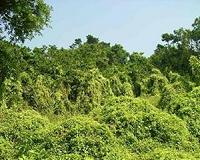 |
Helsinki, Finland (SPX) Apr 5, 2011 Could "interventions" bring children closer to nature? Researchers in Finland think so. A new study published in HortTechnology compares urban and rural children's relationships with plants and recommends horticultural interventions, especially for urban children. In Finland, a country famous for its forests and wilderness, researchers Taina Laaksoharju from the Department of Agricultural Sciences at the University of Helsinki and Erja Rappe of The Martha Association teamed up to investigate the role of vegetation in the lives of urban and rural children. "We were interested in finding out if it is true that children are not interested in plants or playing outdoors", they noted. The study examined the relationships of 9- and 10-year-old Finnish school children to the environment and plants. Using a questionnaire of structured and open-ended questions, the researchers focused on two comparisons: children's relationships with nature in rural and urban neighborhoods, and preferences for plants among boys and girls. 76 children-42 in the Helsinki suburb area and 34 in a rural area-participated in the study. Results suggested that children living in rural surroundings had closer contact with nature than their urban counterparts. For example, more rural children considered people to be "part of nature" than did urban children. The researchers noted that, like children in other Western countries, Finnish children may be in danger of losing direct contact with the natural environment. "This suggests that further research is essential to understand children's experiences if we are to enhance the crucial role of the environment in their lives", they wrote. The children's answers indicated that natural areas are important arenas for children's free play and socializing. "In the suburbs, closer connections to nature are rare; interventions in schools, especially outdoor horticultural ones, can help children to build their relationship to vegetation." The research also showed significant differences in the ways boys and girl experience green plants. Girls were more interested in plants in general, and were more eager to learn about plants than were the boys. Boys saw themselves as more independent of nature; more than 30% of the boys said that they could live without vegetation. Boys wrote that plants are meaningful mainly for nutrition and general living conditions, whereas girls appreciated the beauty of flowers and plants. Laaksoharju and Rappe included recommendations for delivery of horticultural lessons based on remarks from the 9- and 10-year-old boys, who said that they did not like lectures, but enjoyed working with plants. "Learning by doing in an informal learning environment suits the kinesthetic boys better than sitting at a desk listening to a teacher", they said. "Horticultural interventions can be effective starting points to add to children's knowledge, affection, and interest toward greenery, but it is highly recommended that they take place outdoors rather than indoors." The complete study and abstract are available on the ASHS HortTechnology electronic journal web site.
Share This Article With Planet Earth
Related Links American Society for Horticultural Science Farming Today - Suppliers and Technology
 Manage Biological Invasions Like Natural Disasters
Manage Biological Invasions Like Natural DisastersWashington DC (SPX) Apr 5, 2011 Biological invasions get less prime-time coverage than natural disasters, but may be more economically damaging and warrant corresponding investments in preparedness and response planning, according to three biologists writing in the April issue of BioScience. Anthony Ricciardi of McGill University and his coauthors point out that species invasions are becoming more frequent worldwide, lar ... read more |
|
| The content herein, unless otherwise known to be public domain, are Copyright 1995-2010 - SpaceDaily. AFP and UPI Wire Stories are copyright Agence France-Presse and United Press International. ESA Portal Reports are copyright European Space Agency. All NASA sourced material is public domain. Additional copyrights may apply in whole or part to other bona fide parties. Advertising does not imply endorsement,agreement or approval of any opinions, statements or information provided by SpaceDaily on any Web page published or hosted by SpaceDaily. Privacy Statement |